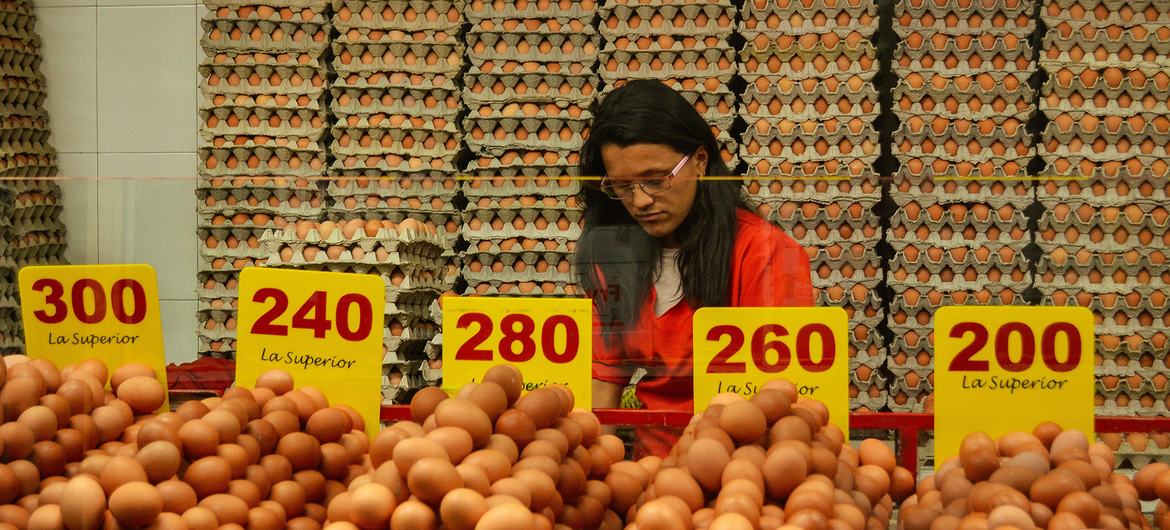The lower growth of trade, the appreciation of the dollar and the tightening of global financial conditions are some of the factors that will affect the economic recovery of the countries of the regionwarned this Tuesday the Economic Commission for Latin America and the Caribbean (CEPAL), forecasting an average growth of 2.7% for the area in 2022.
At the press conference to present his Economic Study 2022held in Santiago de Chile, ECLAC updated its gray growth projections for the subregions in the current year: South America, 2.6% compared to 6.9% in 2021; the group formed by Central America and Mexico, 2.5% compared to 5.7% the previous year; and the Caribbean —the only subregion that will grow more than in 2021— 4.7%, not including Guyana, compared to 4.0% last year.
ECLAC clarified that these forecasts are averages that hide many national realities and recalled the high heterogeneity of the countries of the region.
“This year, 16 countries in the region, that is, almost half, will not have recovered the level of GDP they had before the pandemic”, stressed Daniel Titelman, director of ECLAC’s Economic Development Division.
Titelman also indicated that the decrease in economic activity has slowed down the recovery of labor markets, especially for womenwhose unemployment this year will reach 11.6% this year, higher than 9.5% in 2021.
Crises exacerbated by the war in Ukraine
The ECLAC report explains the low growth and the increase in world inflation as the result of a series of crises exacerbated by the war in Ukraine, which has caused geopolitical tensions, lower global economic growth, less food availability and price increases of energy which, in turn, have fueled the inflation that was experienced due to the impact of the COVID-19 pandemic.
The Acting Executive Secretary of the Commission pointed out that the drop in investment and growing social demands are added to this situation, posing great challenges for macroeconomic policy, which must reconcile measures that promote the reactivation with policies aimed at controlling inflation and making public finances sustainable.
“This accumulated sum of events requires rethinking the economic part,” said Mario Cimoli, adding that a coordination of macroeconomic policies that support the acceleration of growth, investment, the reduction of poverty and inequality, while confronting inflationary dynamics.
Inflation, which has reached a regional average of 8.4%, has led central banks to raise interest rates and reduce monetary aggregates to control it. However, monetary policy alone can lead to a recession, Cimoli warned.
lack of investment
In this regard, the report emphasized that beyond the dynamics of the economic cycle, the low growth of investment in the last three decades has become a structural limitation of development, for which it is crucial to reactivate the investment dynamic for sustainable and inclusive growth.
“Investment is the bridge between the short and medium term and it is essential to face climate change”, states the text.
The study reports that between 1951 and 1979 investment grew an average of 5.9% per year, while between 1990 and 2021 that figure reached just 2.9% per year.
In this context, ECLAC urges to increase investment in Latin America and the Caribbeanunderlining that in 2021 it was at the lowest levels compared to other regions.
He argues that for this purpose a Greater coordination between fiscal, monetary and exchange policy and take advantage of the set of tools available to the authorities in order not to subordinate growth and investment to anti-inflationary policy.
In addition, macroeconomic efforts must be complemented by industrial, commercial, social policies and the care economy, he adds.
ECLAC considers that although an important part of the financing to increase investment must come from the mobilization of internal resources, international cooperation is very important in the process. “For this reason, official development assistance and financing from global financial institutions and development banks must be increased significantly,” he points out.
“If investment does not increase, employment will not increase, nor will informality and inequality be reduced. Investment is needed to generate quality jobs. All the measures that are taken will be a palliative if the investment does not increaseCimoli warned.













Add Comment